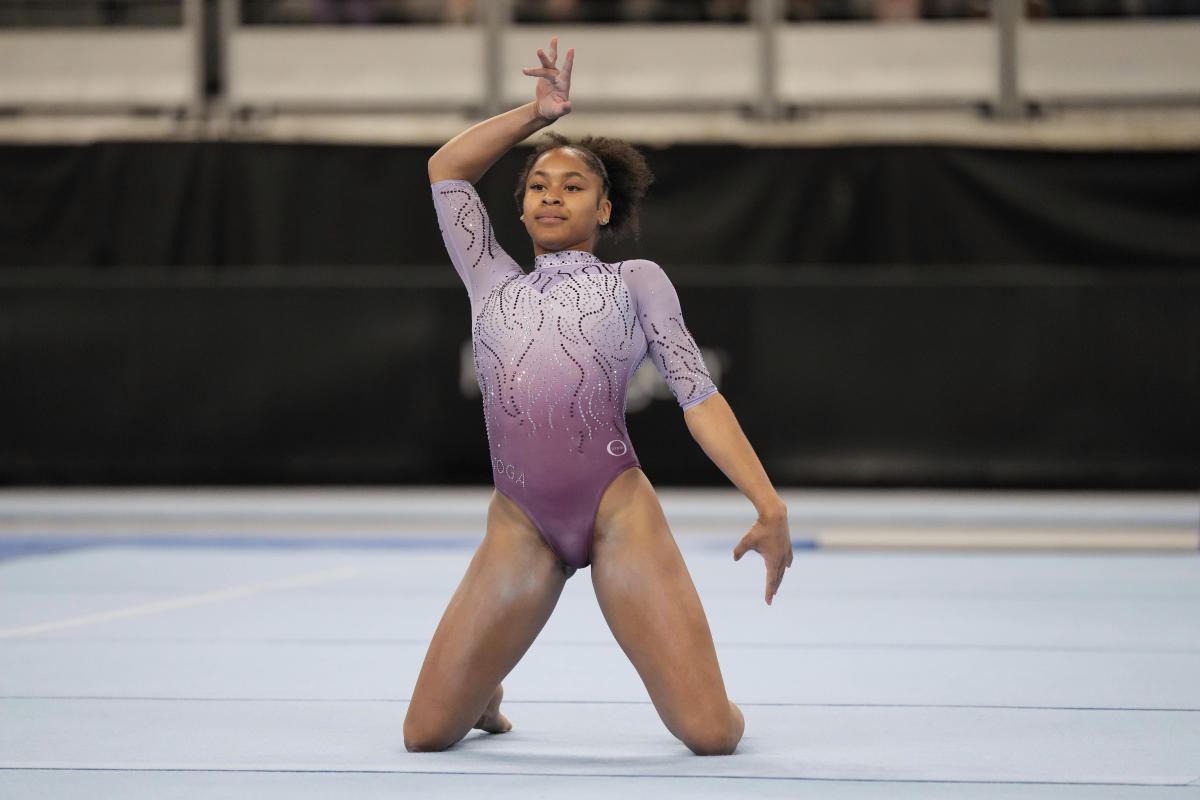Gymnastics Olympic Trials Injury Statistics
Gymnastics olympic trials injury – The gymnastics Olympic trials are a grueling competition, and injuries are unfortunately common. In the past 5 years, there have been an average of 10 injuries per year, with the most common injuries being sprains, strains, and fractures.
The road to the Olympics is paved with both triumphs and setbacks. For gymnasts, the Olympic trials are a particularly grueling test, and injuries are unfortunately a common occurrence. One gymnast who knows this all too well is Kayla Dicello.
In 2016, Dicello suffered a torn ACL that forced her to withdraw from the Olympic trials. It was a devastating blow, but Dicello refused to give up. She underwent surgery and rehabbed diligently, and in 2021, she made a triumphant return to the Olympic trials.
Dicello’s story is a reminder that even when faced with adversity, it’s important to never give up on your dreams.
There has been a slight increase in injury rates in recent years, which may be due to a number of factors, including changes in training methods and equipment. For example, the use of more complex and demanding skills has increased the risk of injury, as has the use of harder landing surfaces.
Contributing Factors, Gymnastics olympic trials injury
- Changes in training methods
- Use of more complex and demanding skills
- Use of harder landing surfaces
Impact of Injuries on Gymnasts’ Olympic Hopes
Injuries are an unfortunate but common part of the sport of gymnastics. The physical demands of the sport can take a toll on gymnasts’ bodies, leading to a variety of injuries, from minor sprains and strains to more serious fractures and dislocations.
Injuries can have a significant impact on gymnasts’ Olympic hopes. A serious injury can sideline a gymnast for months or even years, making it difficult or impossible to train and compete at the level necessary to qualify for the Olympics.
Emotional Impact of Injuries
In addition to the physical pain, injuries can also have a significant emotional impact on gymnasts. They may feel frustrated, disappointed, and even depressed. They may also worry about their future in the sport and whether they will ever be able to reach their full potential.
Coping with Injuries
Gymnasts who suffer injuries must find ways to cope with the physical and emotional challenges they face. They may need to undergo physical therapy, mental health counseling, and training modifications. They may also need to learn to accept that their bodies may not be able to do everything they once could.
Examples of Gymnasts Affected by Injuries
There are many examples of gymnasts who have been affected by injuries. One example is Shawn Johnson, who won a gold medal in the all-around at the 2008 Olympics. Johnson suffered a knee injury in 2010 that sidelined her for several months. She was able to return to competition and qualify for the 2012 Olympics, but she was not able to compete due to another knee injury.
Another example is Jordyn Wieber, who was a member of the gold-medal winning U.S. team at the 2012 Olympics. Wieber suffered a back injury in 2013 that forced her to retire from the sport.
Strategies for Recovering from Injuries
Gymnasts who suffer injuries must develop strategies for recovering from their injuries and returning to competition. These strategies may include:
- Physical therapy
- Mental health counseling
- Training modifications
- Learning to accept their limitations
Injury Prevention and Management for Gymnasts

Injury prevention and management are crucial aspects of gymnastics, considering the physically demanding nature of the sport. A comprehensive approach involving proper training techniques, conditioning exercises, nutrition, and medical support is essential to minimize the risk of injuries and promote optimal recovery.
Best Practices for Injury Prevention
Proper training techniques are paramount. Gymnasts should receive instruction from qualified coaches who emphasize proper form, technique, and gradual progression in skill development. This helps reduce the likelihood of acute injuries resulting from excessive force or improper execution.
Conditioning exercises play a vital role in injury prevention. Strengthening exercises for core muscles, legs, and upper body help stabilize joints, improve balance, and enhance overall athleticism. Flexibility exercises promote range of motion and reduce the risk of strains and sprains.
Nutrition is often overlooked but is essential for injury prevention. A balanced diet provides the necessary nutrients for muscle growth, recovery, and overall health. Adequate hydration is also crucial, as dehydration can lead to fatigue, muscle cramps, and reduced coordination.
Role of Medical Professionals
Medical professionals, such as athletic trainers and doctors, play a crucial role in injury management. They assess injuries, provide immediate treatment, and develop rehabilitation plans. They monitor progress, adjust treatment as needed, and clear gymnasts for return to competition when appropriate.
Creating a Supportive Environment
Creating a supportive environment is essential for injury prevention and recovery. Gymnasts should feel comfortable reporting any pain or discomfort to their coaches and medical staff. Coaches and parents should encourage open communication and foster a culture that prioritizes athlete well-being. They should also provide resources and support to facilitate injury prevention and recovery.
Gymnastics Olympic trials injuries are a serious concern, especially as the women’s gymnastics olympic trials 2024 approach. These injuries can range from minor sprains to career-ending fractures, and they can have a significant impact on an athlete’s ability to compete at their best.
While there is no surefire way to prevent gymnastics olympic trials injuries, there are a number of things that athletes can do to reduce their risk, such as warming up properly, using proper technique, and listening to their bodies.
